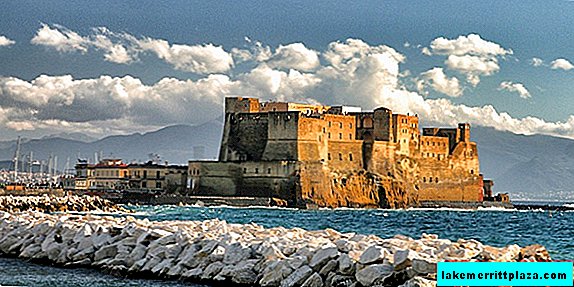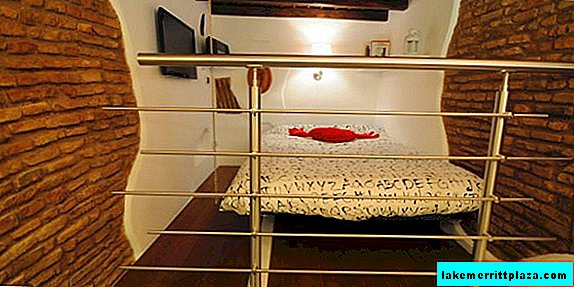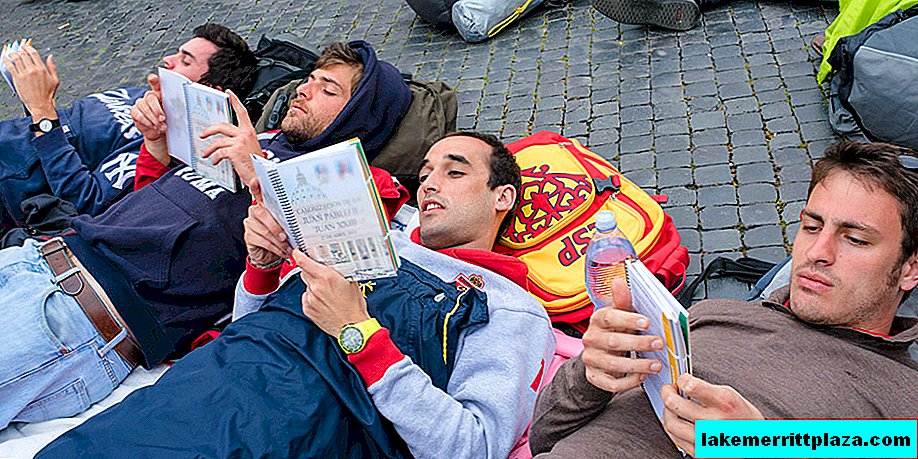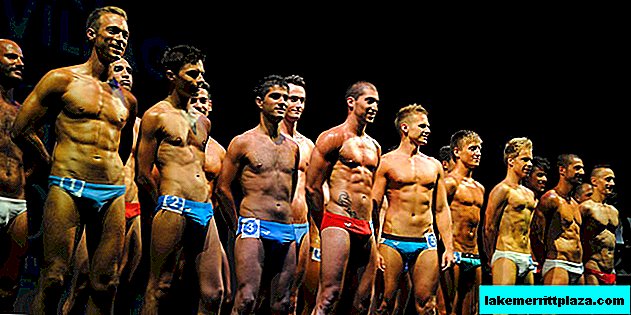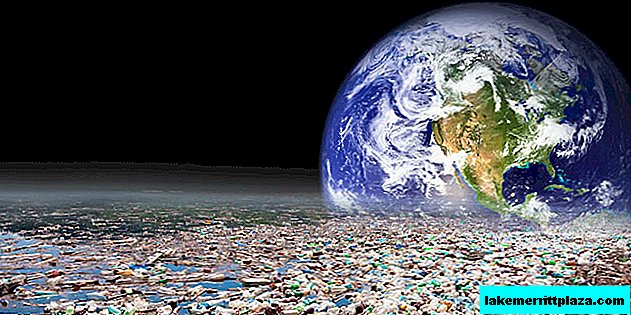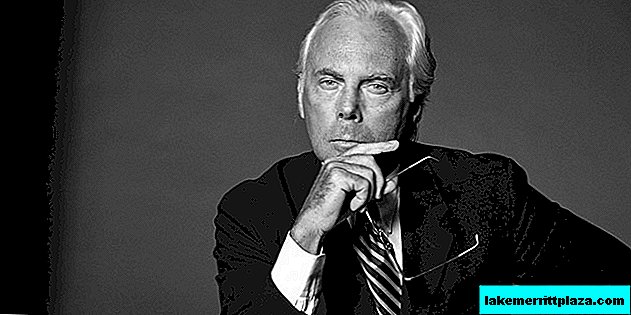Campo Square (Piazza del Campo) in Siena has an unusual shape and a complicated history.
History of the square
The mention of the area in written sources dates back to 1169. At that time, Siena was a sovereign republic. Wool traders and bankers provided her economic power, Siena denarius was an important European currency. And the future Piazza del Campo was the intersection of trade routes: to the south - to Rome; to the west - to the sea; to the north - to Florence.
According to the annals, the citizens cleared a field (Campo) in the valley of the three hills inhabited by the communes of Castellare, San Martino and Camollia, and made it a place for trade. This is how the “field square” - Piazza del Campo, originally had the shape of a funnel surrounded by hilly slopes. The difference in elevation from the edges to the lowland was 5 meters. Residents of rival communes came here not only to trade, but also to sort things out.

The record of the construction of the wall, the border of two squares, belongs to 1193: Piazza del Campo and Piazza del Mercato. The wall soon turned into a "Bolgano" - a mint and Siena customs. The development of the Piazza del Campo is associated with the power of the “Council of Twenty-Four” - representatives of the richest families of bankers (Tolomei, Salimbeni, Buonsignori, etc.). They were Ghibellines - supporters of emperors in the struggle against papal authority, the bishop was expelled from the city.
On the board of the Twenty-Four Council, Siena survived the "finest hour" of her story — a victory at the eternal rival Florence at the Battle of Montaperti in 1260. But the wayward Sienans soon overthrew this government. In 1270, the Council of Nine came to power - a party of Guelph merchants, supporters of Florence and papal authority. Under their leadership, the transformation of the former Kampo into the seat of government and the center of public life of the city began.
In the years 1288–1310, the Bolgano mission was expanded on the Campo Square facade and turned into the Palace of the Commune (Palazzo Comunale, Palazzo Pubblico). In the years 1327-1349 built a tower, known today as Torre del Mangia. Simultaneously with the construction of the tower, the square in front of the palace was paved with red brick, divided into 9 sectors by strips of white limestone. A fan of sectors merged into a single point in front of the Palazzo Comunale, and the palace semicircular embrace covered the rest of the square. Each sector represented one of the rulers of the Council of Nine, and was also a gathering place for two of the 17 urban counteras. Street communities - the counterparts, who were always at odds with each other, humbled their belligerence, taking their place on the Piazza del Campo.
The White Marble Chapel (Capella di Piazza) appeared on the square as a thanks to the Virgin from the surviving townspeople after the plague in 1348. At the same time, the City Council issued a decree banning the construction of houses protruding beyond the line inside the square. The mansions of the Siena nobility obediently encircled the Piazza del Campo, forming an even circle line with a length of 333 meters.
The Church of Peter and Paul, violating harmony, was demolished.
Fountain of Joy (Fonte Gaia) - the final touch on the beauty of the square. It is so named in memory of the feelings of the townspeople who saw in 1409 a source of water spurting from the ground in the square.
- We recommend reading: sights of siena
Sights
Each building on the Piazza del Campo has its own history and serves as a necessary element of harmony. The dominant feature is the Palazzo Pubblico, which sets the style, order and mood of the entire complex. The second most important is the palace tower.
Tore del Manja
Tore del Mangia (Torre del Mangia) - a tower adjacent to the town hall, surprising modern builders. Having a height of 102 meters and being made of fragile material, it has been standing for 500 years and does not collapse. In the city’s annals it is written that fortune coins are at the base of the building, and stones with inscriptions of Jewish and Catholic prayers are laid out in the corners - so neither thunder nor lightning are scary to her.

The building was built in the Gothic style of red brick, a white limestone superstructure, like a crown, crowns the structure.
In 1360, the townspeople mounted a clock in the tower, and the 6-ton bell was changed more than once, but they did not achieve a clear sound. No luck building and with the name. Her first ranger was a food lover and received the nickname Glutton. So the light tower, directed upwards, became the "Glutton Tower". Tourists, having given 7 euros and breaking 400 steps, can admire the wavy Tuscan landscapes and the panorama of the city from a height of 88 meters.
Chapel di Piazza
The graceful loggia of Cappella di Piazza at the foot of the tower is the work of the hands of three masters: the Gothic portico, lined with marble, was created in the 14th century by Giovanni di Cecco.

A century later, Renaissance-style arches and columns appeared, adorned with the fine sculptural work of Antonio Federigi; 100 years later, the chapel was decorated with a fresco of the Madonna and Child and God the Father by Antonio Bazzi.
Fountain of joy
In 1419, the construction of a water supply system in Siena was completed. Through many kilometers of underground channels, water flowed into the Piazza del Campo and was knocked out of the ground by a fountain. Fonte Gaia - Fountain of joy. Now, a marble-lined pool by Jacopo della Quercia has been built on this site. The pool walls are decorated with bas-reliefs of the Virgin, the biblical compositions "Creation of Adam", "Expulsion from Paradise" are complemented by pagan motifs of feeding Romulus and Remus Rhea Sylvia. Statues of she-wolves and lions pour sprinkles of water from their mouths.

The townspeople were delighted with the work of the sculptor, behind him was the name Jacopo della Fonte. To preserve the valuable work of the master, she was placed in a museum, and a copy was left in the square.
House of nobility
The palaces of the aristocratic families of Siena Piccolomini, Saranchini, Buonsignori ring around Campo Square and make up its decoration. Particularly striking is the house of Sancedoni (Palazzo Sansedoni).

The terracotta building, in the best traditions of Siena Gothic, united the five houses of nobility, and the wide facade turned out with a graceful curvature repeating the rounding of the square. The architectural style of the Sancedoni palace is strikingly similar to the Palazzo Pubblico, the high tower above the Sansedoni palace was supposed to balance the Torre del Mangia, but for safety reasons they were forced to shorten it.
Palio Racing
An echo of the passions that raged on the Piazza del Campo in the Middle Ages is the Palio - equestrian competition between the contraries of July 2 and August 16. Each counter, like a small state, has its own coat of arms, flag, allies and opponents. They prepare for the races in advance, all summer participants in medieval costumes hold drum processions with flags along the streets of Siena and end them at the mercy of Campo. Horses and riders are blessed with horse racing in the churches of Peter and Paul.
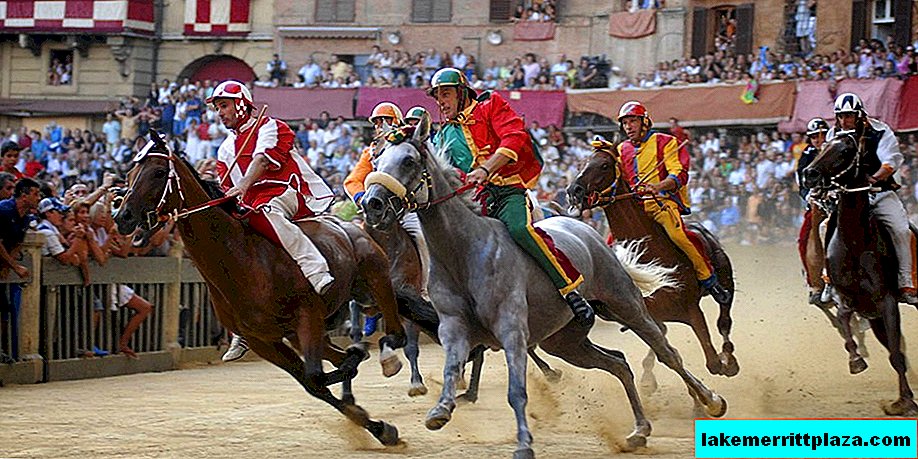
On Palio's Day, tens of thousands of fans gather inside the square (its capacity is 40 thousand people) for a few minutes of spectacular spectacle: each participant needs to go around the square three times - only 1 km - and come to the finish. Riders do not win (rivals can throw off each other by any means), but horses, even if they come to the finish line without riders.
The greatest disgrace is the one who comes second. The winning contrad receives 250 thousand euros as a prize, its flag hangs on the square until the next race. And Campo Square is returning to its leisurely life.
Time can leave its mark on the buildings of the Piazza del Campo, but it cannot destroy the harmony that every person who finds themselves in power falls into. Worthy of admiration are the masters who created an architectural masterpiece from the roughnesses of the terrain.

